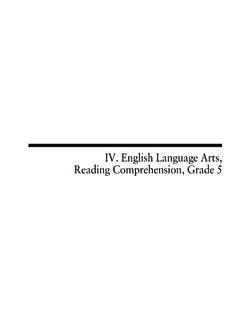Transcription of Quantitative Theoretical and Conceptual Framework Use …
1 Journal of Agricultural Education, 55(1), 186-199. doi: 186 Quantitative Theoretical and Conceptual Framework Use in Agricultural Education Research Tracy Kitchel1 and Anna L. Ball2 Abstract The purpose of this philosophical paper was to articulate the disciplinary tenets for consideration when using theory in agricultural education Quantitative research. The paper clarified terminology around the concept of theory in social sciences and introduced inaccuracies of theory use in agricultural education Quantitative research.
2 Finally, some specific theory uses were outlined. This philosophical paper purported that theory in Quantitative research in agricultural education should be used to: 1. help develop or guide a program, through which aspects of the program itself are researched; 2. define or prescribe how a variable is measured; 3. test middle-range or substantive theories; and 4. articulate and provide rationale behind the relationships between or among variables. A clear delineation for theory use in Quantitative research potentially serves the profession to focus more clearly on investigating quality, in-depth, research problems communicable to broader contexts.
3 Keywords: theory use; Theoretical frameworks; Conceptual frameworks; Quantitative research While a teaching-based discipline in origin, agricultural education has placed an emphasis in developing quality research. In the past five years alone, the leaders in agricultural education revised a National Research Agenda, organized two professional development sessions at national meetings geared toward improving quality in research manuscripts and research reviews, and engaged in a national dialogue regarding the role of abstracts and research ethics in the discipline.
4 A scan of related research revealed that, historically, research quality, research focus, and the nature of research in agricultural education has been published in the Journal of Agricultural Education and related conference proceedings approximately every ten years. The literature about research in agricultural education emerged over thirty years ago, setting precedence for a sustained focus on research methodology and topics issues. In a ten-year span between the mid 1980 s to mid- 1990 s, the literature on agricultural education research focused on syntheses of research (Lee, 1985), priorities for directing a research program (Warmbrod, 1986), how to direct publication (Crunkilton, 1988), obstacles to research (Buriak & Shinn, 1989), alternative types of research (Wardlow, 1989), and priorities and directions for future research (Buriak & Shinn, 1993).
5 The research on agricultural education research in the late 1990 s through early 2000 s focused on reviewing prolific authors from previous decades (Radhakrishna & Jackson, 1995), developing a research agenda in agricultural education (Williams, 1997), appropriate types of analyses (Miller, 1998), topics of research inquiry (Radhakrishna & Xu, 1997), and the use of Conceptual and Theoretical frameworks in research (Dyer, Haase-Wittler, & Washburn, 2003). The 1980 s and 1990 s can be summarized as 20 years of research on how to and what to publish in agricultural education.
6 As agricultural education conducted more research as a discipline, the research on research consequently evolved to document esteemed researchers as well as the broader disciplinary research base. The publication trajectory of individual research authors, themes and 1 Tracy Kitchel is an Associate Professor in the Department of Agricultural Education and Leadership at the University of Missouri, 126 Gentry Hall, Columbia, MO 65211, 2 Anna L. Ball is an Associate Professor in the Department of Agricultural Education and Leadership at the University of Missouri, 127 Gentry Hall, Columbia, MO 65211, Kitchel and Ball Quantitative Journal of Agricultural Education 187 Volume 55, Issue 1, 2014 methodologies in the Journal of Agricultural Education was documented (Edgar, Edgar, Briers, & Rutherford, 2008)
7 , and academic departments in agricultural education were ranked based, in part upon the distinguishing characteristics of rigor and research productivity (Birkenholz & Simonsen, 2009). The National Research Agenda for the American Association for Agricultural Education (AAAE) was developed in 2007 (Osborne, 2007) and revised in 2011 to outline research priority areas (Doerfert, 2011). Finally, a manuscript in the Journal of Agricultural Education developed tenets for enhancing the quality of manuscripts published in the journal (Roberts, Barrick, Dooley, Kelsey, Raven, & Wingenbach, 2011).
8 Through studies on research in agricultural education, it is clear the profession places concern on research topics, methodologies, and quality. Interestingly, over the trajectory on the research on research, the same issues of quality, topics, and methodologies continue to be revisited. Clarifying theory use, which helps shape how a study is framed and developed, could help the profession address these issues. Researchers in agricultural education have used and misused theory in a variety of ways (Langley, Thieman, Martin, Kovar, & Kitchel, 2011), despite a clear emphasis on professional development for and research publications about research in the profession.
9 Generally speaking, faculty have diminished research capacity in regard to time and fiscal resources, and focus a great deal of time in teaching, outreach, and service-related activities. In addition to time constraints, agricultural education comprises a very broad disciplinary research base, which could be viewed as a lack of focus. Agricultural education, as a discipline of approximately 200 members, (American Association for Agricultural Education, 2012) comprising agricultural communications, Extension, leadership, and teacher education across the six broad research priority areas of.
10 Public and policy-maker understanding of agriculture and natural resources, professional and scientific workforce for the 21st century, new technologies, practices, products and adoption decisions, meaningful engaged learning, efficient and effective agricultural education programs, and vibrant resilient communities (Doerfert, 2011). Other, much larger social sciences-related disciplines might research the equivalent of one of those research areas with many more researchers who have much higher individual research appointments.










